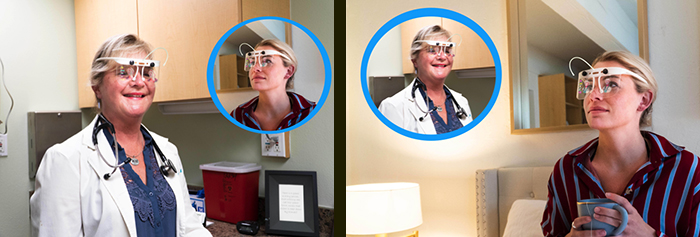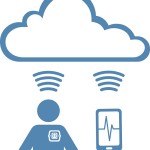The COVID-19 pandemic has made an indelible mark around the globe. We could not quite have anticipated the abrupt changes that society has had to make in regard to personal contact and social distancing. Government-mandated quarantine has compelled professionals in many industries to consider what their work dynamic looks like through the lens of telecommunication in a post-quarantine world. This is especially true for the patient-centered medical profession, and it is clear both augmented reality (AR) and extended reality (XR) technologies are part of that vision of the future.
AR technology, or augmented reality, is visual technology that superimposes computer-generated images or video on a user’s view of the real world, thus providing a composite view.
XR technology, or extended reality, is typically an umbrella term encapsulating augmented reality (AR), virtual reality (VR), mixed reality (MR), real reality (RR) and everything in between. It also includes combined environments and human-machine interactions generated by computer technology and wearables, such as artificial intelligence (AI), where the ‘X’ represents a variable for any current or future spatial computing technologies including digital content of any sort (3-D MRI or CT scan images for example, or data visualizations, like patient vitals superimposed on an AR headset.
AR/XR technology can promote more effective patient interaction and provide superior patient outcomes compared to a non-enhanced experience. XR replaces the real world for a completely immersive understanding of the patient’s body. It allows for detailed interactivity as well as haptic and sensory feedback. XR grants doctors the ability to see and manipulate a three-dimensional version of their patient through minimally invasive means.
AR enhances the real world, overlaying digital elements into the user’s current surroundings. Surgeons and doctors can use AR glasses to provide vital guidance during procedures and exams. This includes accessing a holographic image of the patient or even facilitating a full body scan to pinpoint ailments. Both XR and AR technologies could make a significant impact on the post-quarantine world when it comes to telemedicine and permit healthcare professionals to provide a superior patient experience with improved patient outcomes.
The XR Telemedicine Experience
Among other concerns, the COVID-19 crisis has brought healthcare worker safety to the surface, especially with Personal Protective Equipment (PPE) shortages. Healthcare professionals are risking their lives to care for others in this volatile health environment. While numbers are still pouring in, it was reported by the CDC that as of the beginning of April approximately 9,300 healthcare workers had been diagnosed with the virus, 4,650 needed intensive care and 27 had died. On top of this, some hospital staff have decided to quarantine during this period for fear of bringing the virus home to their families. COVID-19 isn’t the only highly-infections virus in the modern era, and it most likely won’t be the last. We need our healthcare professionals to be able to do their jobs without such a high risk of exposure.
XR technology has the answer. XR is already being implemented as a surgical training tool and in some surgical procedures. It’s time to expand the technology for the benefit of all. Doctors can perform delicate procedures, complete check-ins, and nurses and other hospital staff could care for patients all from a removed location while keeping the patient in a quarantined area. By using AR coupled with haptic capabilities, and AI, healthcare professionals will be able to get up-close-and-personal with a patient, monitoring all vitals and even interacting with the patient without putting themselves at risk. XR AI can help predict when patients will need more or less care and can “ping” healthcare professionals when immediate attention is needed. Patients can also be given a XR set so they can see their healthcare workers, receive the face-to-face human connection they need to feel safe and understand more about what is happening to them, all while being monitored and clinically checked remotely by the healthcare professional.
In a post-quarantine setting VR technology will provide the safety and efficiency infectious disease care needs. There are additional applications for those with compromised immune systems, in assisted living facilities, in geographically distanced locals or even in dangerous military situations.
AR Telemedicine as an Everyday Tool
One thing became abundantly clear as the coronavirus spread. We simply did not have enough hospital space to accommodate all the patients that would need monitoring. While some areas were able to get ahead of the virus and institute stay-at-home orders to flatten the curve, places like New York, Spain and Italy saw an overwhelming need for increased capacity and monitoring, with patients lining the hallways in some areas. AR technology provides a unique opportunity to monitor patients from anywhere, alerting doctors if a patient becomes distressed and needs additional attention.
AR technology such as a remote medical presence headset can provide valuable remote monitoring during a time of overwhelming need and also enable doctors to learn more about patient condition even if they are in an unresponsive state. Such AR headsets are wirelessly connected and permit doctors to measure patient vitals seen immediately on the doctor’s headset lens while tracking symptoms in real time. Data such as heart rate, respiratory rate and effort, temperature and weight, blood oxygen and eye-tracking and optical coherence tomography (OCT) are all delivered instantaneously. A patient who needs monitoring can be sent home with an AR device and then is prompted to return to the ICU only when the headset “pings” the healthcare professional that vitals or symptoms require immediate attention, freeing up valuable space in the hospitals while still providing superior symptom monitoring.

In a post-quarantine world, this type of AR/XR technology can help doctors diagnose medical needs, monitor the health of patients at assisted living facilities, treat those who would prefer to convalesce at home or in other cases such as accidents where monitoring many people at once is necessary.
AR/XR Facilitate Future of Telemedicine
As quarantine swept the nation, telemedicine surged and become a vital tool in our healthcare system. Patients who had other needs and chose to avoid the doctor’s office and risk exposure to COVID-19 started taking advantage of portal, phone and video appointments. As we look ahead to post-quarantine healthcare, we can see how both AR and XR technologies will play important roles. Healthcare professionals will be able to use these tools to provide superior care, enhance staff safety and develop plans for the best patient outcomes. In a post-quarantine world, telemedicine and the use of AR/XR technology will become just as normal as an in-office or hospital visit.
Key in this effort to expand remote medical presence is reimbursement to the medical community. Last year, before COVID-19, CMS issued its final 2019 Physician fee Schedule and Quality Payment Program, which opened the door to healthcare reimbursement for services that enable providers to get paid to manage and coordinate care at home or remotely. Now, after the COVID-19 pandemic, the rules have been expanded for telemedicine. CMS recently released a final rule that included changes mandated by the 21st Century Cures Act and the 2018 Bipartisan Budget Act, especially targeting telehealth. Technologies such as the previously mentioned remote medical presence headset are one answer to help reduce the costs and effort in the patient and healthcare provider dynamic, while keeping in tune with social distancing. The technology brings immediacy and accuracy to the patient’s diagnosis, treatment and monitoring, right from their own homes.







